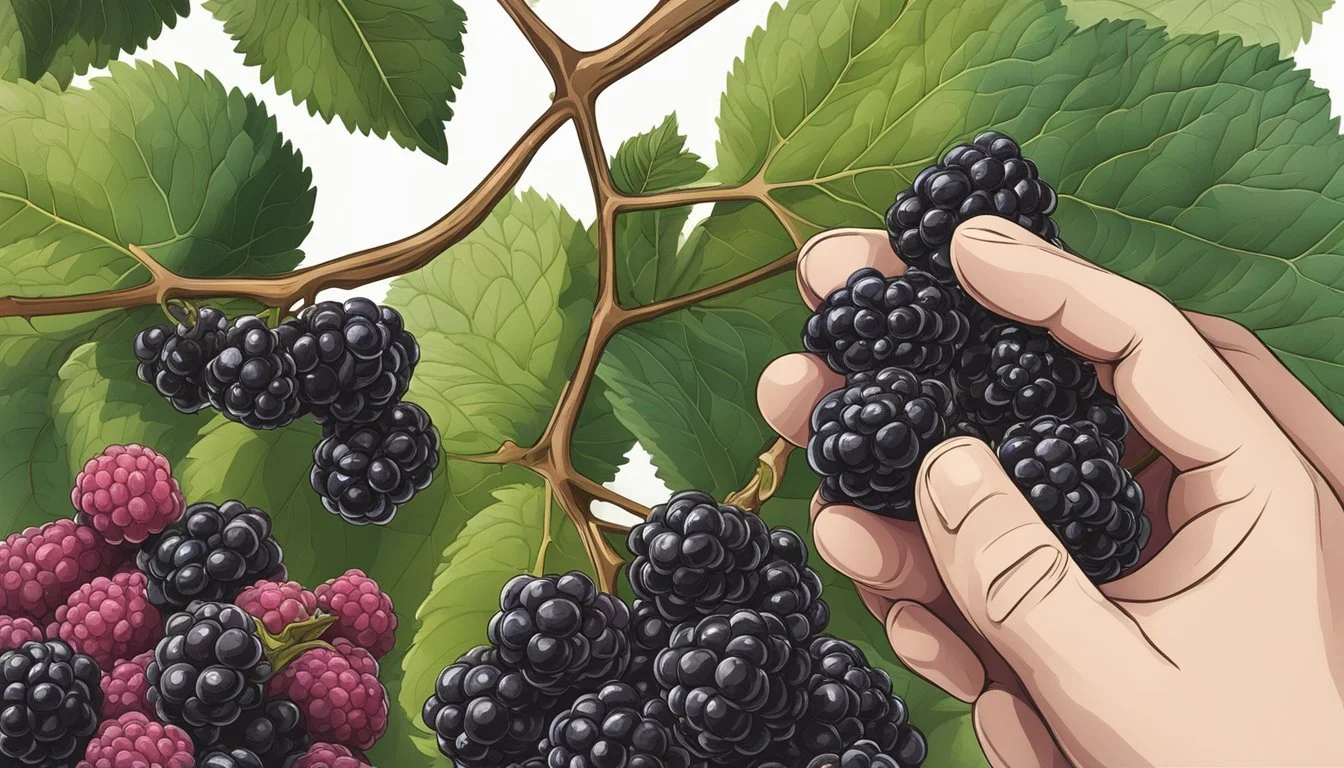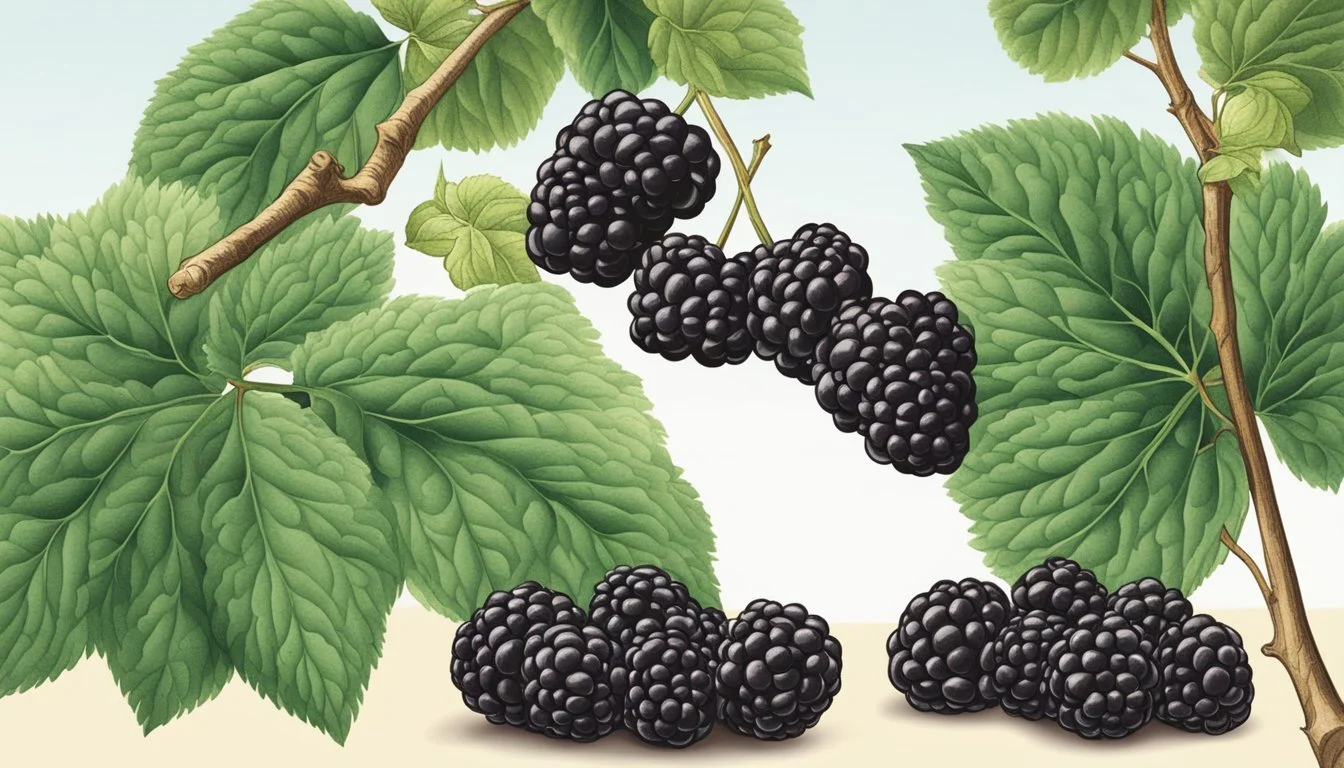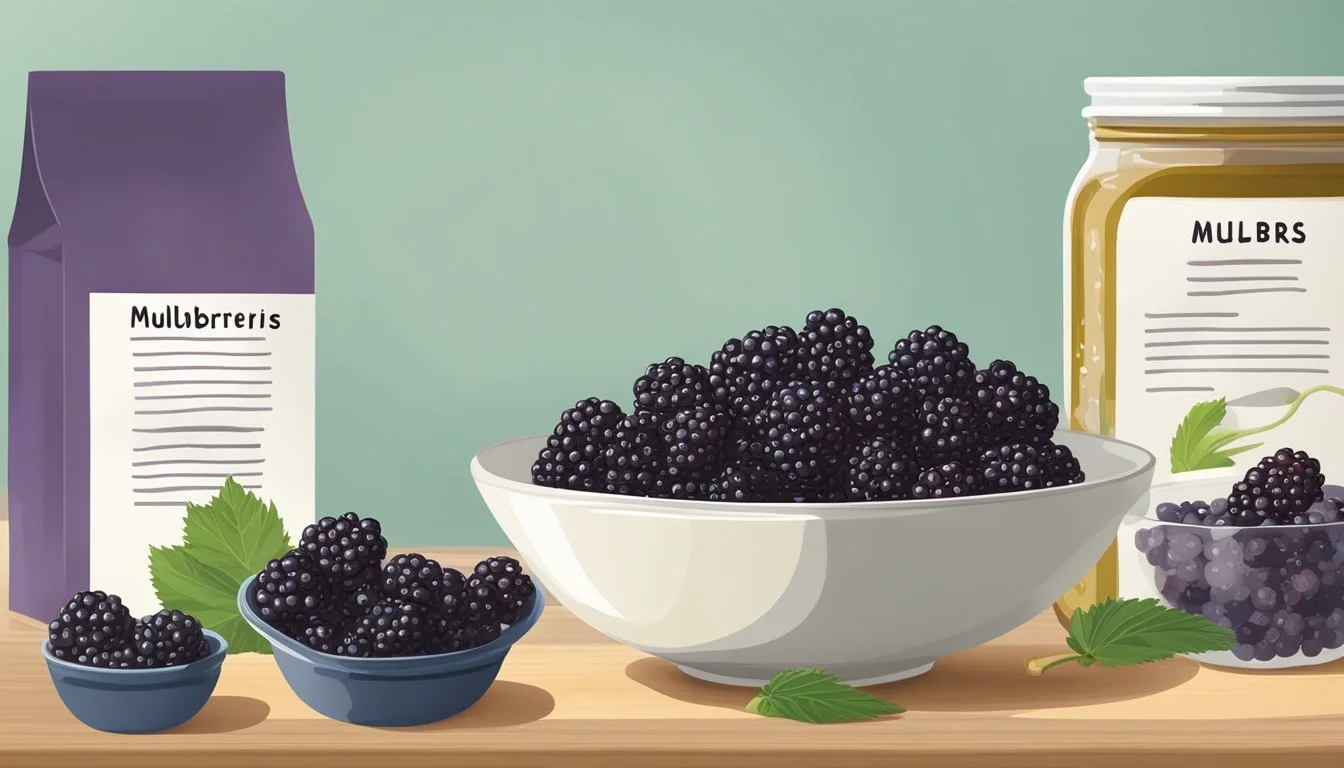How to Substitute Mulberries for Blackberries in Baking and Cooking
Mulberries and blackberries are two types of fruit that are often mistaken for one another, thanks to their superficial resemblance in shape and color. Understanding the nuances of these two fruits is essential for culinary enthusiasts and home cooks alike, particularly when considering substitution. Although they share similar appearances and can both cause staining, each has unique qualities in terms of flavor, texture, and growth habits. Blackberries are known for their juicy, tangy taste and grow on thorny bushes, while mulberries tend to be sweeter, with a mild flavor and grow on trees.
When substituting mulberries for blackberries in recipes, it is vital to consider the impact on the final dish. The sweetness and subtle flavor of mulberries may not provide the same depth as the bold, tangy flavor of blackberries often does. However, this substitution can work well in recipes where the berry's role is to add a general berry flavor without overpowering the dish. Cooks might opt for this substitution in smoothies, jams, or baked goods, adjusting the amount of added sugar if necessary to account for the difference in natural sweetness between the two berries.
Since both fruits can typically be used interchangeably in terms of preparation and cooking times, mulberries can indeed be a satisfactory stand-in for blackberries, provided that the cook is aware of the slight variations in taste and sweetness. Thus, whether one is dealing with a surplus of mulberries from a backyard tree or simply cannot find blackberries at the market, the option to substitute mulberries remains a confident choice for a variety of culinary applications.
Understanding Mulberries and Blackberries
When substituting mulberries for blackberries, it is essential to appreciate their botany, and the distinct characteristics each berry possesses, from growth habit to taste and texture.
Botanical Classification
Mulberries belong to the Morus genus and are a part of the Moraceae family, whereas blackberries are a member of the Rubus genus within the Rosaceae family. Mulberries grow on trees, while blackberries develop from shrubs or brambles.
Characteristics of Mulberries
Mulberries can be found on mulberry trees which commonly grow in regions across Asia. There are multiple species of mulberries, but the most prevalent are black and white mulberries. The fruit is typically elongated in shape, with a texture that is softer than blackberries. Mulberries retain their stem when picked and display a variety of colors, from red to dark purple, almost black for the black mulberries, and a lighter shade for white mulberries.
Characteristics of Blackberries
Blackberries, part of the Rosaceae family, are known as an aggregate fruit, composed of small drupelets. They grow on thorny or thornless bushes with canes that can either be trailing or erect. Blackberries are rounder, without a stem, and have a segmented appearance. Their color is typically a uniform deep black or dark purple when ripe, with a taste that balances sweetness with a tangy flavor. The texture is firmer compared to mulberries, and they come in various sizes depending on the species.
Culinary Uses and Substitution
When substituting mulberries for blackberries, one must consider flavor profiles, texture, and sweetness adjustments. The correct approach can result in successful incorporation into various dishes, from jams to muffins.
Flavor Profile Comparison
Mulberries tend to be sweeter and less tart than blackberries, which have an intense flavor. Blackberries contribute a more robust taste to dishes, whereas mulberries are milder and slightly floral.
Blackberry Flavor Profile: Intense, tart. Mulberry Flavor Profile: Sweet, mild, floral.
Substituting Mulberries in Recipes
Mulberries can directly replace blackberries in most recipes. However, due to their milder taste, one might need to:
Use more mulberries to achieve the desired flavor intensity.
Combine with other fruits to add complexity to the flavor profile in dishes such as fruit salads, tarts, and jams.
Adjusting for Texture and Sweetness
The silkier texture of mulberries and their higher sugar content can affect the outcome of recipes. Adjustments may include:
Reducing added sugar in the recipe since mulberries are sweeter.
Altering cooking times slightly, as mulberries may break down faster than blackberries, especially important in baking applications like muffins.
Considerations for Cooking and Baking
In cooking and baking, the substitution impacts more than just taste; it changes nutritional content and dish structure.
Health benefits: Swap knowing that mulberries are higher in vitamin C while blackberries offer more fiber.
Texture: Expect a softer texture from mulberries, potentially changing the final feel of a dish.
Stability in cooking: Consider that mulberries might not hold their shape as well as blackberries when heated.
Nutritional Comparison
When substituting mulberries for blackberries in any recipe, it's important for the reader to consider the differences in their nutritional content, which can slightly affect the health benefits of the dish. Both fruits offer valuable nutrients, although their profiles have distinct variations in vitamins, minerals, fiber, and antioxidants.
Vitamins and Minerals Content
Blackberries are known for their high vitamin C, vitamin K, vitamin A, and vitamin E content, alongside copper and magnesium.
Mulberries, on the other hand, contain more vitamin C and iron, with considerable amounts of vitamin B2 (riboflavin) compared to blackberries.
Here is the specifics for each fruit per 100 grams:
Nutrient Blackberries Mulberries Vitamin A Moderate Low Vitamin C High Higher Vitamin E Moderate Low Vitamin K 19 mcg 7 mcg Iron Low Moderate Copper Moderate Low
Fiber and Antioxidants
Fiber: Blackberries contain more fiber, which is crucial for digestive health and may aid in maintaining healthy cholesterol levels.
Antioxidants: Both blackberries and mulberries are rich in antioxidants such as anthocyanins, which are known to combat oxidative stress in the body.
Nutrient Blackberries Mulberries Fiber Higher (significantly) Lower Antioxidants High (anthocyanins present) High (anthocyanins present)
In terms of calories, both blackberries and mulberries have the same low amount, making them a healthy choice for those monitoring their calorie intake. For protein and macronutrients, mulberries have slightly higher protein content, while blackberries offer a better balance of fats. Neither fruit contains cholesterol, making them a heart-healthy option.
Substituting mulberries for blackberries would contribute to a diet high in vital nutrients while also providing the benefits of antioxidants, supporting overall health by reducing the risk of chronic diseases associated with oxidative stress.
Horticultural Aspects
In substituting mulberries for blackberries, gardeners must consider aspects such as growth patterns, storage conditions, and the distinct characteristics of each berry type to ensure a successful crop.
Growth and Cultivation
Mulberry trees are deciduous and can serve as hosts for silkworms, economically benefiting the silk industry. They thrive across various habitats but prefer temperate climates. Mulberries require full sun to part shade and well-drained soil. They lack the thorny canes of blackberry bushes and instead grow on trees that may require support structures like a trellis as they mature.
Blackberries, on the other hand, grow best in full sun on thorny or thornless canes that often need a trellis for optimal support. Regular pruning promotes healthier bushes and larger berry production. Both plants are generally hardy but have specific pruning and watering needs based on the variety and climate.
Harvesting and Storage
Mulberries have a short shelf life and are quite fragile, making them difficult to transport. They are usually picked by shaking the tree branches after covering the ground with a cloth. Harvest season varies, starting in late spring to early summer. Blackberries have a slightly longer harvest time, typically beginning in mid-summer to early autumn. They can be handpicked when ripe and are less fragile than mulberries, making them easier to handle during transport.
For both berries, proper storage involves keeping them cool and dry to extend their shelf life. Mulberries must be consumed or processed soon after picking due to their delicate nature. Blackberries can be refrigerated for a few days or frozen for longer storage.
Varieties and Their Properties
Mulberries:
Form: Longer and oval.
Size: Varied; typically larger than blackberries.
Taste: Less sweet, more vegetable-like.
Color: Red, white, or black when ripe.
Blackberries:
Form: Rounder and segmented.
Size: Smaller than mulberries.
Taste: Sweet-tart balance with noticeable sugar content.
Color: Deep purple to black when ripe.
Each variety has a distinct flower that, when pollinated, develops into the fruit. The flowers' ability to attract pollinators is essential for a fruitful season. Gardeners should choose varieties adapted to their local conditions for best results.
Final Considerations
When substituting mulberries for blackberries, one should consider the availability, nutritional content, and culinary applications to ensure a successful adaptation in recipes and diets.
Availability and Accessibility
Mulberries and blackberries thrive in different environments which influences their seasonal availability. Blackberries are typically harvested from thorny bushes during late spring to early summer, although cultivated varieties may be available year-round. Mulberries, growing on trees, have a slightly shorter season from late spring to late summer. While blackberries are commonly found in supermarkets, mulberries may require a visit to a farmer's market or specialty store, depending on one's location.
Health Benefits and Uses
Both berries offer nutritional advantages and may contribute to a healthy lifestyle when integrated into one's diet. Blackberries contain high levels of vitamin A, vitamin K, and fiber, which can support vision health and contribute to maintaining normal cholesterol levels. They are also rich in antioxidants, which may play a role in cancer prevention. Mulberries, on the other hand, are a good source of vitamin C, vitamin B2, calcium, iron, and potassium. Their sugar content is higher than that of blackberries, which should be considered in the context of dietary needs.
Incorporating Berries into Your Diet
Substituting one berry for another may impact the culinary outcome due to texture and sweetness variations:
Texture: Blackberries' segmented structure offers a different mouth-feel compared to the smoother mulberries.
Sweetness: Due to higher sugar content, mulberries are naturally sweeter and can reduce the need for added sugars in recipes.
Incorporating these berries into one's diet can be done in various ways:
Breakfast: Adding to cereals, oats, or yogurt.
Baking: Used in pies, tarts, and muffins, with potential recipe adjustments for sugar.
Beverages: Crafting into smoothies or juices, keeping in mind the sweetness levels.
Snacking: Enjoying fresh or dried as a nutrient-rich snack.
Each berry's distinct characteristics should be matched with the intended dietary preferences and culinary requirements.






